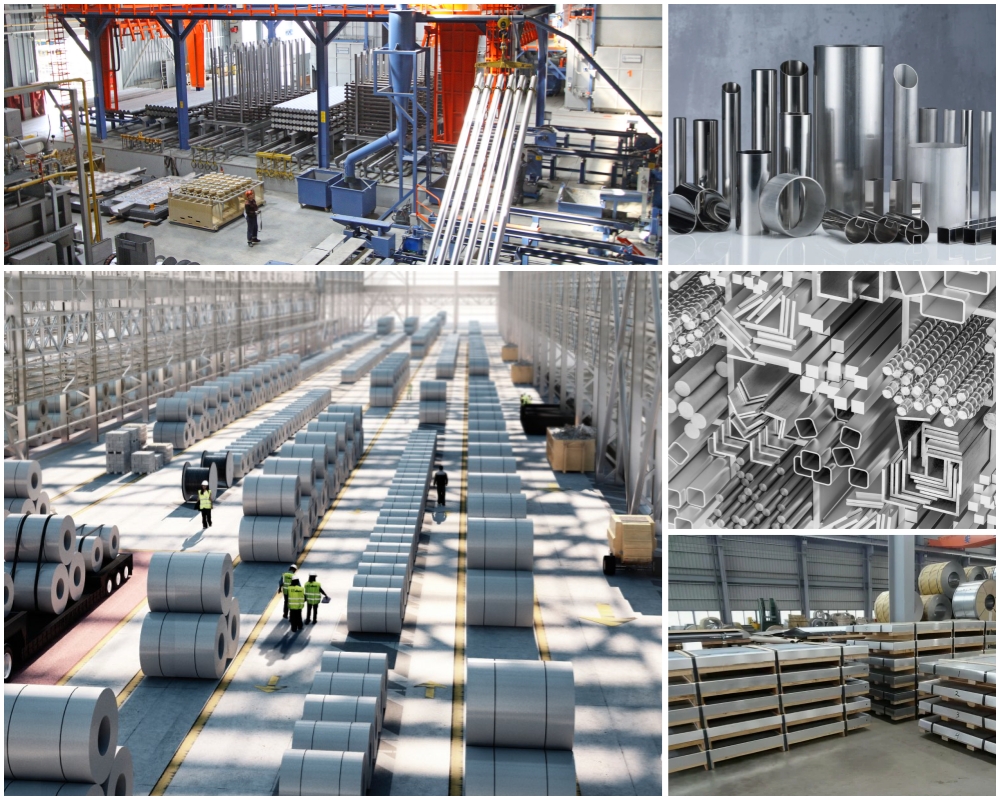Below is a detailed comparative analysis of AISI 316, AISI 316L, 1.4404 and 1.4401 stainless steels:
| Standard System | Grade | Description |
|---|---|---|
| European (EN) | 1.4401 | Equivalent to AISI 316, C ≤0.07% |
| European (EN) | 1.4404 | Equivalent to AISI 316L, extra-low carbon (C ≤0.03%) |
| American (AISI) | 316 | Austenitic stainless steel with Mo, better corrosion resistance than 304 |
| American (AISI) | 316L | Extra-low carbon version of 316, weldable without post-weld annealing |
| Element | 1.4401 / AISI 316 (%) | 1.4404 / AISI 316L (%) | Notes |
|---|---|---|---|
| C | ≤0.07 | ≤0.03 | Lower carbon reduces intergranular corrosion risk |
| Cr | 16.5–18.5 | 16.5–18.5 | Forms passive film for corrosion resistance |
| Ni | 10.0–13.0 | 10.0–13.0 | Stabilizes austenite structure |
| Mo | 2.00–2.50 | 2.00–2.50 | Improves pitting and crevice corrosion resistance |
| Mn | ≤2.00 | ≤2.00 | Enhances machinability |
| Si | ≤1.00 | ≤1.00 | Deoxidizer for casting properties |
| Property | Value | Unit | Condition |
|---|---|---|---|
| Density | 7.9–8.0 | g/cm³ | 20°C |
| Melting Point | 1370–1450 | °C | - |
| Thermal Conductivity | 15 | W/(m·K) | 20°C |
| Linear Expansion | 16.5×10⁻⁶ | 1/°C | 20–100°C avg. |
| Electrical Resistivity | 0.75×10⁻⁶ | Ω·m | 20°C |
| Elastic Modulus | 193–200 | GPa | 20°C |
| Property | 1.4401 / AISI 316 | 1.4404 / AISI 316L | Unit |
|---|---|---|---|
| Yield Strength (Rp0.2) | ≥200 | ≥200 | MPa |
| Tensile Strength (Rm) | 500–700 | 500–700 | MPa |
| Elongation (A5) | ≥40% (thick)/≥30% (thin) | ≥40% (thick)/≥30% (thin) | % |
| Hardness | ≤215 HB | ≤215 HB | - |
Key Notes:
316L/1.4404 has lower carbon content than 316/1.4401, making it more suitable for welded applications where post-weld annealing is impractical.
Molybdenum (Mo) in both grades enhances resistance to chloride-induced corrosion (e.g., in marine or chemical environments).
Both grades are non-magnetic in the annealed state.

Differences and selections:
316L/1.4404: Ultra-low carbon, no annealing required after welding to resist intergranular corrosion, suitable for welded structures (such as thick plates, complex parts).
316/1.4401: Slightly lower cost, suitable for non-welding or simple welding scenarios.
Corrosion resistance:
Stress corrosion may occur at high temperatures (>60°C) or in high-concentration chloride environments, and long-term exposure should be avoided.
Molybdenum content improves pitting resistance, but has limited resistance to high-concentration sulfuric acid and hydrochloric acid.
Weldability:
316L does not require annealing after welding, while 316 thick sections require annealing.
316L welding wire (such as ER316L) is recommended to match the low-carbon characteristics.
